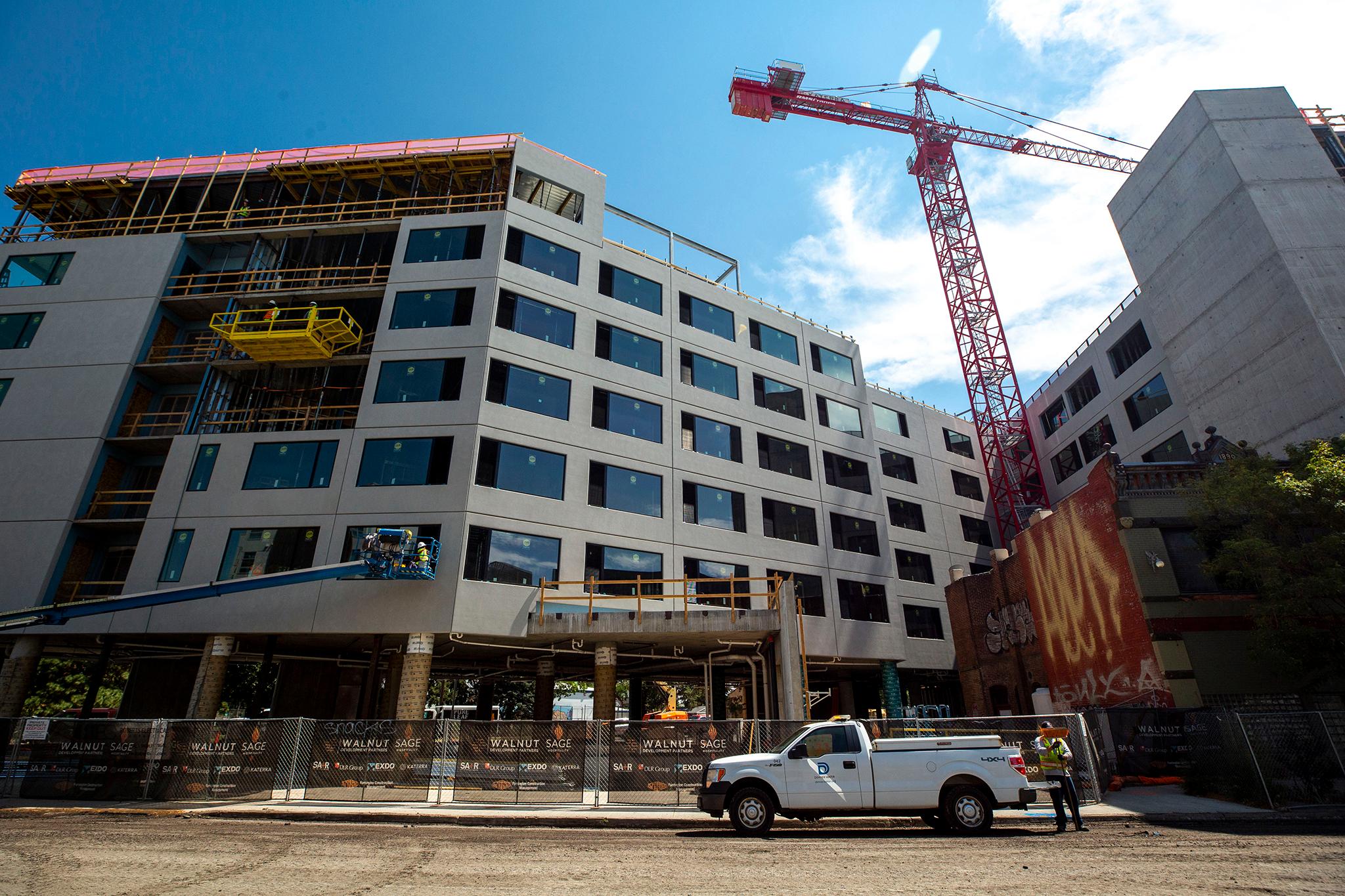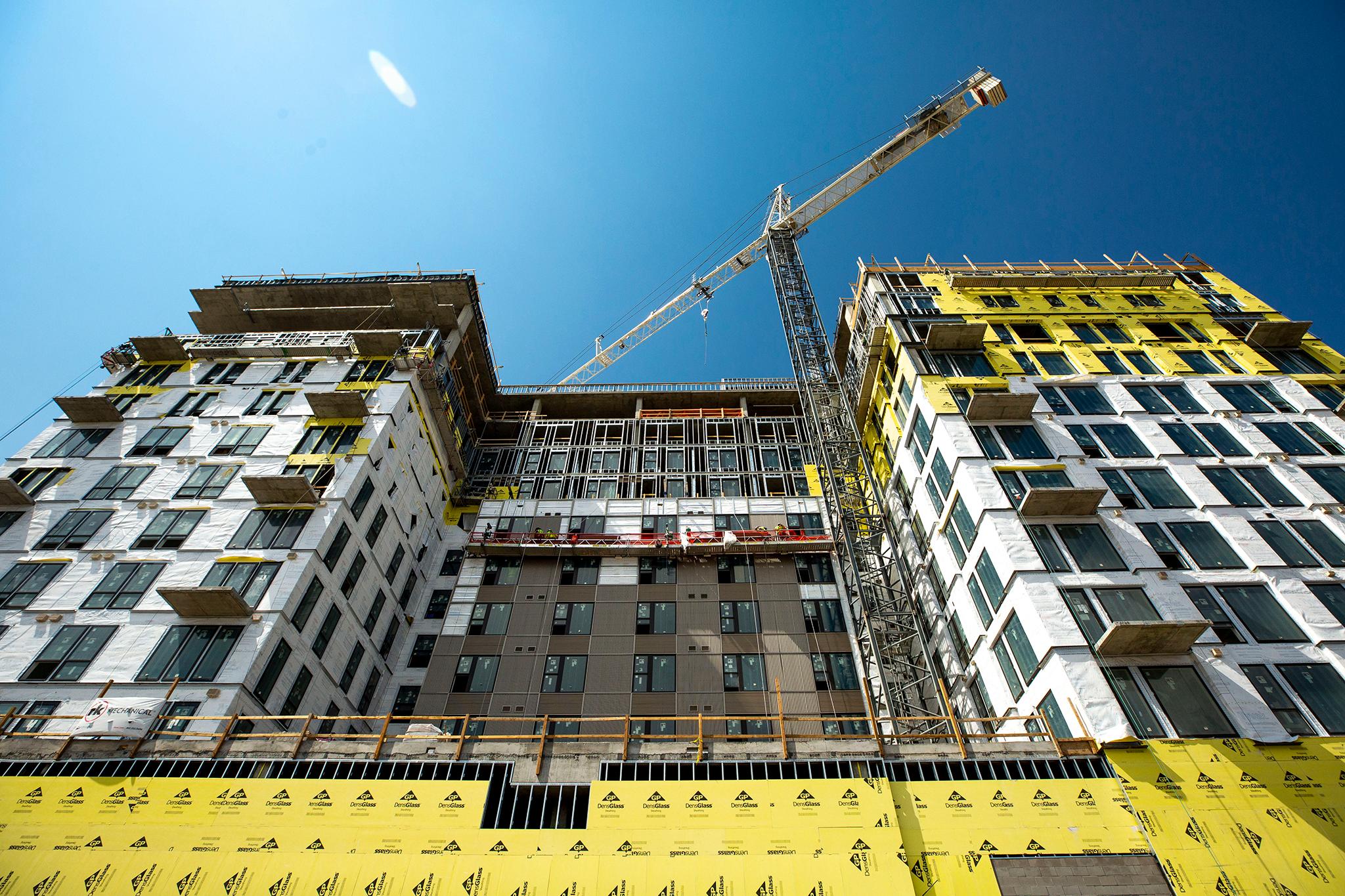As of 2019, Denver was short about 100,000 homes for people who make less than the median income, according to a report from the city's planning department. In human terms, that means you're going to have a hard time finding housing and making ends meet whether you live alone and make under $56,000 or you have a family of four and pull in less than $80,000.
Rent control isn't allowed in Denver, so in 2016 elected officials and city planners conceived a workaround aimed at making a dent in the affordable housing shortage. The zoning change, specific to the area around the 38th & Blake RTD station in the River North section of Five Points, let developers build up to 16 stories -- if they promised to bake less pricey homes into their projects.
Height incentives are not new to American cities, but they were new to Denver at the time. Like fishermen picking a lure, city officials debated how best to get developers to bite on building below-market homes that return smaller profits. Theoretically, more height would allow for extra units, helping developers make up the cost of cheaper ones (and then some). Proponents saw the new zoning as a win-win that gets the government what it wants -- a compact, walkable neighborhood near transit where people who aren't wealthy can live -- and gets developers a profitable bottom line.
Officials had hoped the incentive would produce projects with 10 percent of their homes priced below the going rate. Four years after its conception and two years after it became official, the zoning lever has resulted in 643 planned or existing apartments, 36 of them deemed "affordable," according to Denver Community Planning and Development. In other words, 5.6 percent of new apartments are priced below-market.
So what happened? Not enough developers took the bait.
Before the new zoning became official, developers helped the city shape the policy by drawing up proformas that tried to project how many affordable homes would come out of the incentive, but they were all predicated on developers taking the incentive in the first place. The incentive was not enough of an incentive.
Eight stories, the maximum height already allowed, was plenty for half of the homebuilders who have started projects since 2018, said Analiese Hock, a city planner who is analyzing 38th & Blake's zoning to see how the city might encourage more affordability from the private sector. Plus, developers and their lenders may not want to foot the bill for a taller building.
"Much of that has to do not only with the entitlement but also building costs," Hock said. "Once you go up to those higher heights, your building costs increase."
Former city councilman Albus Brooks, who sponsored the ordinance, disagrees with the planning department's math. He said the percentage of "affordable" apartments and condos around the station is much higher because the planning department's calculation "isn't part of the largest affordable housing project in there."

That project, which includes the Walnut Street Lofts and another unnamed building, includes at least 66 homes priced for people making a good chunk less than the average Denverite. It's part of a land trust run by the Urban Land Conservancy, a nonprofit with a mission to develop affordable housing. A private company owns the building, but the nonprofit owns the land, so tenants pay rent for their apartments but not the expensive dirt on which they sit.
Developers took advantage of the 16-floor incentive but the human-over-profit model skews the results.
"For transparency's sake, we didn't want to inflate that number because we wanted to be transparent about what the incentive system was producing, not what the land dedication allowed for," Hock said.
Brooks pointed to a piece of the zoning that lets developers contribute to other projects around the station if they can't make the affordable piece work with their project.
"That doesn't get done unless another project invests in it," the former councilman and current developer said.
At least one developer who used the incentive said it made perfect sense for them. Zocalo Community Development is opening The Edit at River North, where 16 of the 367 homes will be priced below-market.
"One thing that we did really like about it was that the rules were written pretty clearly and were made available to everybody," said Ted Featherstone with Zocalo. "And it was before we put an offer in to buy this particular piece of land, so we were able to understand what the incentive program would look like and what it would mean for us to be able to work within it. Everything was kind of a math equation. And if you knew the inputs, you knew the outputs."
When the incentive idea was being fleshed out, many housing advocates said it wasn't aggressive enough. Others say less expensive homes exist even though they weren't required and that's better than nothing.
Brooks believes the height incentives are far from a failure. In a hot neighborhood in city that cannot legally force developers to build below-market housing, developers are building below-market housing.
Still, he admits the incentives weren't perfect.
"This is an iterative process," Brooks said.
The number of affordable homes developers must build are based on square footage, not a percentage -- something Brooks said he would like changed. But he believes a lot of the experiment's value lies in the future as the city tries to funnel density and affordability to RTD train stations and bus rapid transit corridors as part of Blueprint Denver, the city's 20-year plan for growth.
The future is exactly why Hock is studying 38th & Blake. Denverites can expect similar types of development down the road as the planning department, armed with results from the experiment, aims to implement similar but more effective incentive zoning in pockets across the city.
We keep putting quotes around 'affordable' because it's subjective, and the height incentives were designed to produce housing for the wealthiest of the underprivileged.
Developers who want more height must produce below-market homes, but just barely. They can be priced for households making 80 percent of the area's median income or less. In 2020 dollars, that means $64,000 for a household of two.
Most of the need in Denver is for people with much lower incomes, Hock said.
"While it is certainly an important income level that is important for the broader community, it's not where the highest needs is," Hock said. "When we look at where cost-burdened renters and owners are, it's at that deeper (affordability) level" of between 30 and 50 percent of Denver's median income.













